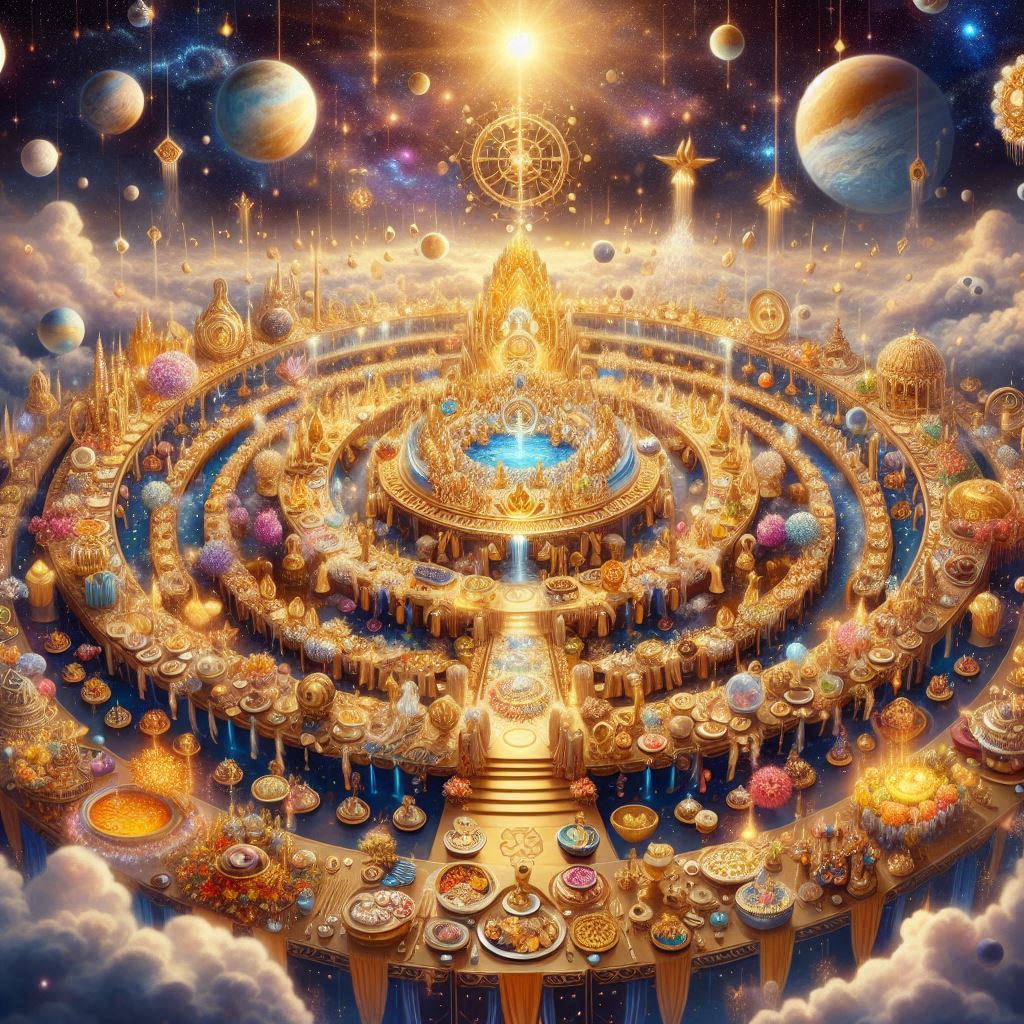The Sabha of Yama Dharmaraja – Stories from Sabha Parva
Yama (Yama Dharmaraja) is the son of the sun god and is also known as Vaivasvata Yama. His sabha was built by Vishwakarma, the celestial architect.

Yama Dharmaraja’s sabha is a hundred yojanas long and can travel anywhere in the universe. It has the perfect temperature (neither hot nor cold). Grief, pain, hunger, thirst, old age, misery, fatigue, and obstructions cannot be found in this sabha. All human and divine desires can be satisfied here. There is enough food and drink for everyone and anyone. The water is tasty and can be found in hot and cold temperatures. The trees bear delicious fruit at all times.
Rajarishis and Brahmacharis attend Yama. Yayati, Nahusha, Puru, Mandhata, and many famous kings can be found in this sabha, including Pandu. Rishis like Agastya and Matanga as well as Kala, Mrithyu, Siddhas, and ancestors who performed severe austerities are a part of Yama’s sabha. Men who died on winter solstice and those who performed evil deeds are present in this sabha.
Trees like palasha, shimshapa, kusa grass, kasha, etc., are found here. The sabha is filled with several kings who act as courtiers of Yama Dharmaraja. However, the place never feels crowded. Everyone in the sabha wears spotless clothes, bracelets, earrings, and flower garlands. They sing, dance, eat, drink, and have a happy time. Gandharvas and apsaras are found even in Yama’s sabha (they travel from one sabha to another).
Sacred sounds, flowers, and fragrances fill the sabha to create a divine atmosphere. Ten million men wait upon the guests in the sabha.
Here’s the list of kings in Yama’s sabha –
Yayati, Nahusha, Puru, Mandhata, Somaka, Nriga, Trasadasyu, Turaya, Kritavirya, Shrutashrava, Aripranuda, Susimha, Kritavega, Kriti, Nimi, Pratardana, Shibi, Matysa, Prithavaksha, Brihadratha, Aida, Marutta, Kushika, Samkashya, Samkriti, Bhava, Chaturashva, Sadashvormi, the king Kartavirya, Bharata, Suratha, Sunitha, Nala from Nishadha, Divodasa, Sumana, Ambarisha, Bhagiratha, Vyashva, Sadashva, Vadhryashva, Panchahasta, Prithushrava, Rushadgu, Vrishasena, the immensely powerful Kshupa, Rushadashva, Vasumana, Purukutsa, Dhvaji, Rathi, Arshtishena, Dilipa, Usinara, Oushinara, Pundarika, Sharyati, Sharabha, Shuchi, Anga, Arishta, Vena, Duhshanta, Sanjaya, Jaya, Bhangasvari, Sunitha, Nishadha, Tvishiratha, Karandhama, Bahlika, Sudyumna, the powerful Madhu, Kapotaroma, Trinaka, Sahadeva, Arjuna, Dasharathi Rama, Lakshmana, Pratardana, Alarka, Kakshasena, Gaya, Gourashva, Jamadagni Parasurama, Nabhaga, Sagara, Bhuridyumna, Mahashva, Prithvashva, Janaka, the king Vainya, Varishena, Puraja, Janamejaya, Brahmadatta, Trigarta, King Uparichara, Indradyumna, Bhimajanu, Gaya, Prishtha, Naya, Padma, Muchukunda, Bhuridyumna, Prasenajit, Arishtanemi, Pradyumna, Prithagashva, Ajaka, the one hundred kings from Matsya, the hundred Nipas, the hundred Hayas, the one hundred Dhritarashtras, the eighty Janamejayas, the one hundred Brahmadattas, the one hundred fighting Iris, Shantanu, Pandu, Ushadgava, Shataratha, Devaraja, Jayadratha, Vrishadarbhi, Dhaman and his ministers and thousands of Shashabindus.
Note: The numbers mentioned indicate all the kings with the same name. Repeating the same names as ancestors was common in ancient times.
Also, read about Indra’s Sabha, Brahma’s Sabha, Kubera’s Sabha, and Varuna’s Sabha.
